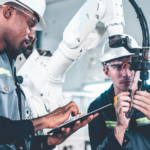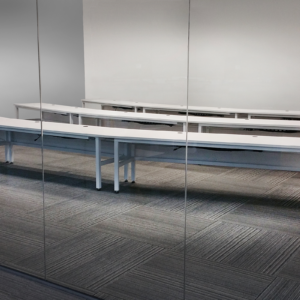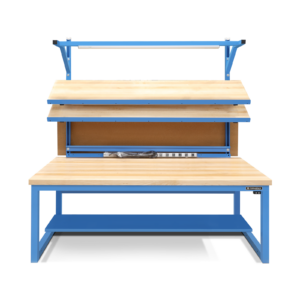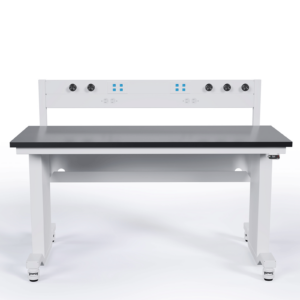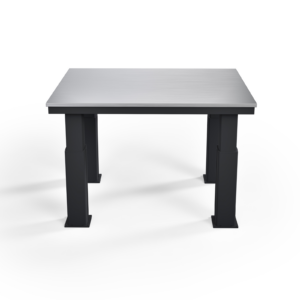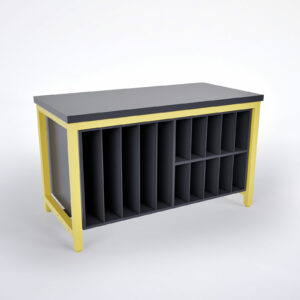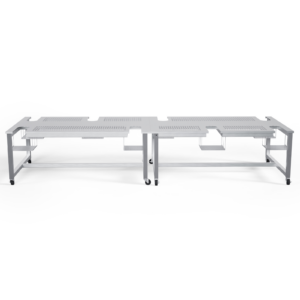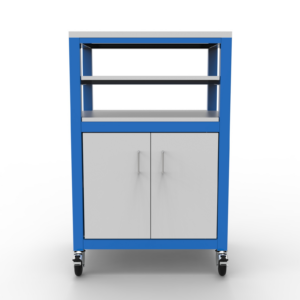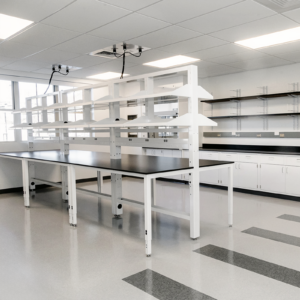Electronics assembly and manufacturing
We all want to see more electronics manufacturing and assembly jobs return to the USA, but, as Apple CEO Tim Cook explains, China’s advantages in manufacturing go beyond low wages. We take a look at what we need to do here domestically to improve the American manufacturing ecosystem and how partnering with Formaspace is part of the solution.
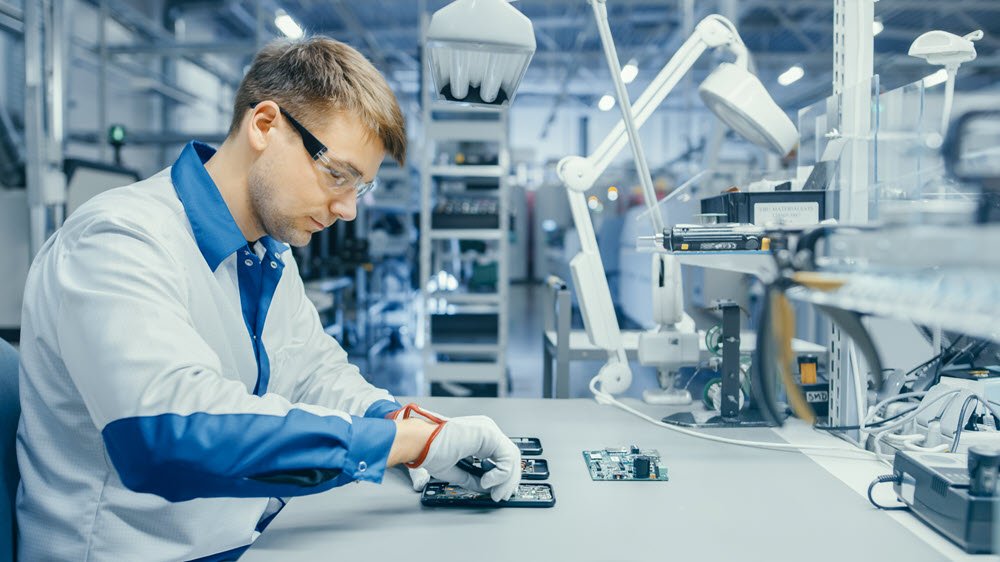
Why do Companies Turn to China for Electronics Manufacturing?
Why has China become so successful in electronics manufacturing and assembly? Most people would assume it’s because of low labor costs. But, according to Apple CEO Tim Cook, that’s one of the biggest misconceptions about manufacturing electronics in China.
“The truth is China stopped being the low labor cost country many years ago, ”explained Cook during a Fortune technology conference in Guangzhou. “For us, the number one attraction is the quality of people.”
Cook said that China’s success in advanced manufacturing comes down to three things: 1) exceptional craftsmen skills, 2) sophisticated robotics, and 3) advanced computer science world — a combination that is “very, very rare to find anywhere” else in the world.
What Can Be Done to Improve American Manufacturing Capabilities in Electronics Assembly?
Let’s dive a little bit deeper to identify what Cook considers to be the most important best practices in Chinese electronics manufacturing — practices that we need to emulate here at home to compete effectively on the world stage.
1. More Skilled American Workers are Needed to Fuel an American Renaissance for Electronics Manufacturers
Problem: Shortage of Skilled American Electronics Manufacturing Workers
According to Cook, China has developed the necessary skills to create the kind of advanced, state-of-the-art precision tooling required to build world-class products.
“In the US, you could have a meeting of tooling engineers, and I’m not sure we could fill the room. In China, you could fill multiple football fields,” said Cook. “(The) vocational expertise is very deep, very very deep here, and I give the educational system (in China) a lot of credit for continuing to push on that even when others were de-emphasizing vocational (training). Now, I think many countries in the world have woke up and said, ‘you know this is a key thing and we’ve got to correct that,’ but China called that right from the beginning.”
Solution: Invest in More STEM Education, Votech Training, Mentoring, and Apprenticeships
The USA needs more skilled tooling engineers, manufacturing specialists, process engineers, and manufacturing specialists to compete with Chinese manufacturing. Greater investments in STEM education and Votech training, combined with mentoring and apprenticeship programs, would help create a broader foundation for a renaissance in American electronics manufacturing.

2. Innovation and Quality is an Iterative Process at Successful Electronic Manufacturing Companies
Problem: Successful Electronics Product Manufacturing Requires Highly Integrated Teams Working Closely Together
Tim Cook also addresses another common misconception about manufacturing products in China — that Apple designs its products in California and simply ‘tosses them over the wall’ to Chinese companies who make them.
“The truth is the engineering and process development associated with our products requires innovation in and of itself — not only the product but the way that it’s made — because we want to make things in the scale of hundreds of millions, and we want the quality level of zero defect. That’s always what we strive for,” explains Cook. “And the way that you get there is — particularly when you’re pushing the envelope on the type of materials that you have and the precision of the specifications that you’re forcing a hand-in-glove kind of partnership. You don’t do it by throwing it over the chasm; it would never work.”
Solution: Innovative Entrepreneurs, Engineers, and Software Developers Need to Embrace Manufacturing
Yet in America, this kind of manufacturing partnership where design engineers work closely with production engineers is less common. Often, talented engineers opt to work in non-manufacturing-oriented startup companies, or, if they do pursue manufacturing careers, work in offices that are removed from the factory production areas. We need to elevate the perception that manufacturing careers are indeed high-tech, status-worthy jobs (which they are!).

3. Electronics Manufacturing Clusters Located in Regions with Modern Infrastructure Do Better
Problem: The US Lacks Sufficient Geographic Concentration in Advanced Electronics Manufacturing
The Shenzhen region in China has become an electronics manufacturing super hub. Its very size and concentration of activity is a classic example of the “network effect,” whereby a region becomes more competitive and profitable thanks to an increasingly dense concentration of resources. In Shenzhen’s case, these resources are a unique combination of human skills, closely-knit supply chains, and a spirit of manufacturing entrepreneurship and competitiveness that rivals Silicon Valley.
Solution: Need to Grow an Electronics Manufacturing Base in the USA
Electronics manufacturing in the US suffered a setback when Flex Ltd., which had been manufacturing Apple MacBook Pro computers in the Austin, Texas area, lost the contract to Quanta Computer Inc., who plans to resume manufacturing these high-end Apple computers in a factory located near Shanghai. Some analysts point to the lower supply-chain transportation costs that come from being closer to other component manufacturers as being one of the reasons for the move to China.
This underscores the need to develop a long-term electronics manufacturing base in the US capable of creating its own ‘Network Effect’ synergies.
4. Electronic Manufacturing Companies Need to Scale Up Production into the Millions — with Zero Defects
Problem: Electronics Manufacturers Need to Produce Millions of Products with Virtually No Quality Defects
Tim Cook called out Apple supplier Luxshare-ICT as an example of a supplier who has been able to scale up production over time – taking on increasingly complex manufacturing tasks – by first making cables for Apple and now AirPods. Cook explains that “when you think about AirPods as a user, you might think ‘oh this couldn’t be that hard — it’s really small.’ (But) the AirPods have several hundred components in them and the level of precision embedded to get the audio quality — without getting into the really nerdy engineering — it’s really hard, and it requires a level of skill that is extremely high.”
Solution: Pursue an Evolutionary Strategy of Long-Term Growth
Cook points out that to be successful at the global level, the electronics manufacturing eco-system needs to be able to scale up its production capabilities into the millions of units. This has been a shortcoming for Apple’s American manufacturing efforts to date, as explained in this NY Times report that focuses on how computer production in Texas faltered due to a lack of suppliers who could produce a certain miniature machine screw in sufficient quantities.
It may be more strategic for American electronics manufacturers to start lower on the complexity scale, perhaps by following the example of Luxshare-ICT, which started out making cables before advancing to more complex electronics assembly operations. But the bottom line is today’s electronics manufacturing industry requires major volume production, which has been a challenge to date here in the USA.
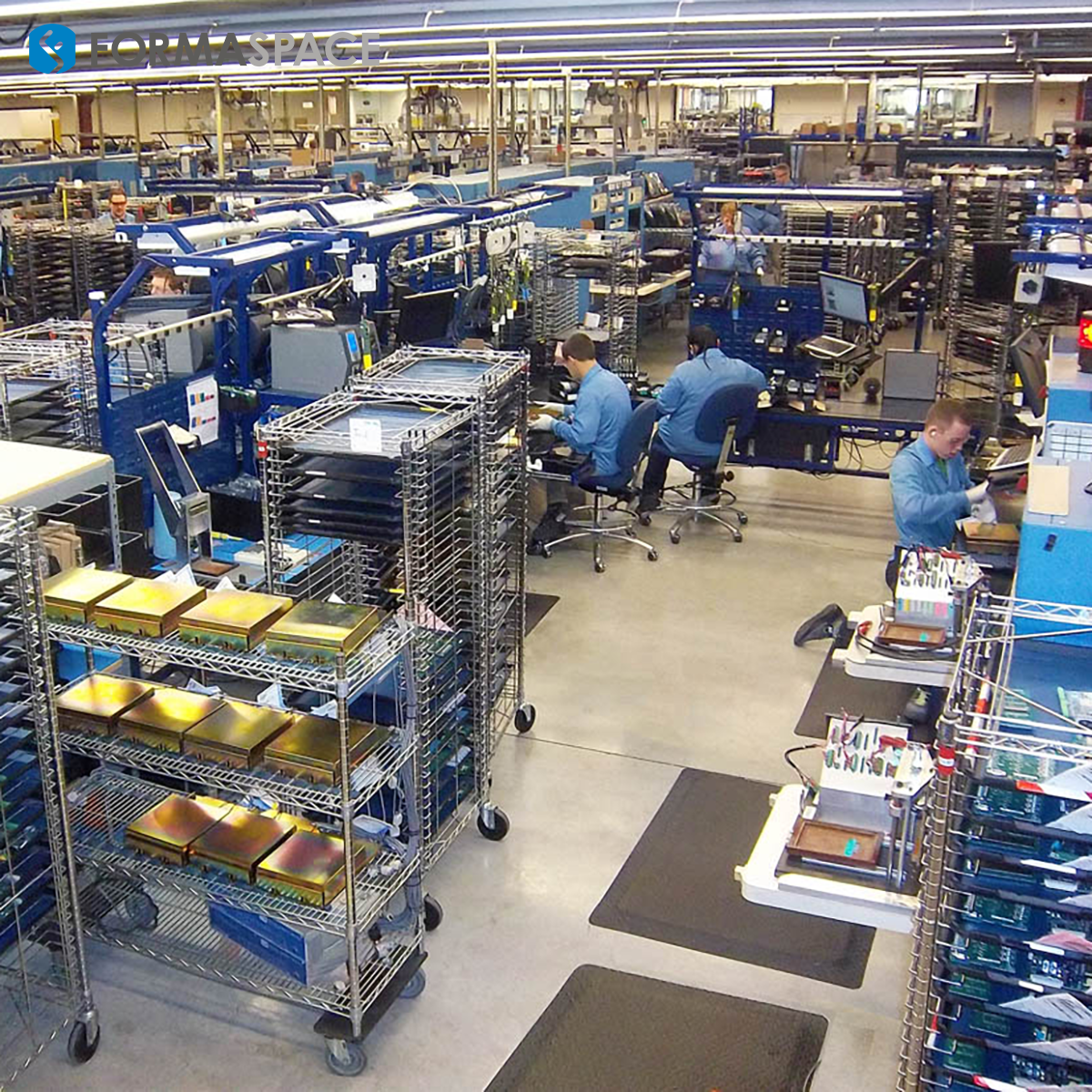
Foxconn — the New Face of American Electronics Manufacturing?
Apple’s leading contract manufacturer is the Taiwan-based Hon Hai Precision Industry Co., Ltd.
Better known by its trade name “Foxconn Technology Group,” the company has twelve factories in China, including the giant “Foxconn City” in Shenzhen, China, where most of the world’s iPhones are built.
So the industry was rocked in 2017 when Foxconn founder Terry Gou signed an agreement with the state of Wisconsin to build a new US electronics manufacturing and assembly plant near Milwaukee.
In an interview with the Milwaukee Journal Sentinel in 2017, Gou said he saw many reasons to be bullish on American electronics manufacturing in Wisconsin, pointing out that:
- Wisconsin has strong tradition in manufacturing that could support a renaissance in deploying robotics and artificial intelligence. Well-known manufacturers are active in the state, including GE Healthcare, Rockwell Automation, Johnson Controls, and Harley-Davidson.
- The central US location gives Foxconn an advantage covering the North American market, with good transportation infrastructure links in place, including railroad lines and nearby major airports (Milwaukee and Chicago O’Hare International).
- The region has good natural resources, including access to a critical component in glass panel production: fresh water from Lake Michigan. (This contrasts to the debilitating water shortage plaguing Chennai, India where Foxconn recently started building iPhones.) Gou also notes that Wisconsin has reliable energy supplies.
- Wisconsin has a strong university and technical college system to help develop the high-tech workforce the company will need for electronics manufacturing.
- Finally, Gou found the public and private partners in Wisconsin to be more responsive than other US states, thanks to then governor Walker, former House Speaker Paul Ryan, and the administration in Washington.
Concern over Massive State Incentives has led to Increased Scrutiny over Foxconn Plans for US Manufacturing in Wisconsin
There was a sixth advantage for Foxconn as well: Wisconsin offered more than $4.5 billion in government incentives in exchange for a promise to create as many as 13,000 “good-paying jobs” — starting as early as 2022.
Unfortunately, the cordial relationships and optimism that marked the start of this project have deteriorated into a game of political football, especially now that three of the major negotiators are absent from the project. (Governor Walker is out of office, House Speaker Paul Ryan has retired, and Foxconn founder Terry Gou has left the company to pursue a campaign for president of Taiwan.)
Meanwhile, the press has conducted an increasing number of investigations that contend Foxconn won’t be able deliver anywhere near the number of jobs it promised. In response, Foxconn (which is very tight-lipped about its future plans and trade secrets) has expressed bitterness over the extreme scrutiny. Foxconn’s new top executive Louis Woo said it feels “almost like being in a glass fishbowl, and we are the only goldfish inside that bowl.”
Will Foxconn eventually be successful with its plans to manufacture AI-enabled, 8K screens with built-in 5G connectivity in Wisconsin? We certainly hope so. And we are reminded of what Tim Cook said inspires him in the face of criticism.
“If you were to come to my office — in addition to a couple of photos or so of heroes — you would see this huge wooden plaque with the inscription in it of the ‘man in the arena’ quote from President (Teddy) Roosevelt:
It is not the critic who counts; not the man who points out how the strong man stumbles, or where the doer of deeds could have done them better. The credit belongs to the man who is actually in the arena, whose face is marred by dust and sweat and blood; who strives valiantly; who errs, who comes short again and again, because there is no effort without error and shortcoming; but who does actually strive to do the deeds; who knows great enthusiasms, the great devotions; who spends himself in a worthy cause; who at the best knows in the end the triumph of high achievement, and who at the worst, if he fails, at least fails while daring greatly, so that his place shall never be with those cold and timid souls who neither know victory nor defeat.
Formaspace is Your Electronics Assembly Partner
If you can imagine it, we can build it, here at our factory headquarters in Austin, Texas.
Our furniture clients include some of the most famous names in business, including Apple, Boeing, Capital One, Dell Computer, Google, Oculus, Toyota, Twitter, and more.
When it comes to industrial furniture solutions for electronics manufacturing and assembly, Formaspace builds highly-custom solutions for your unique needs.
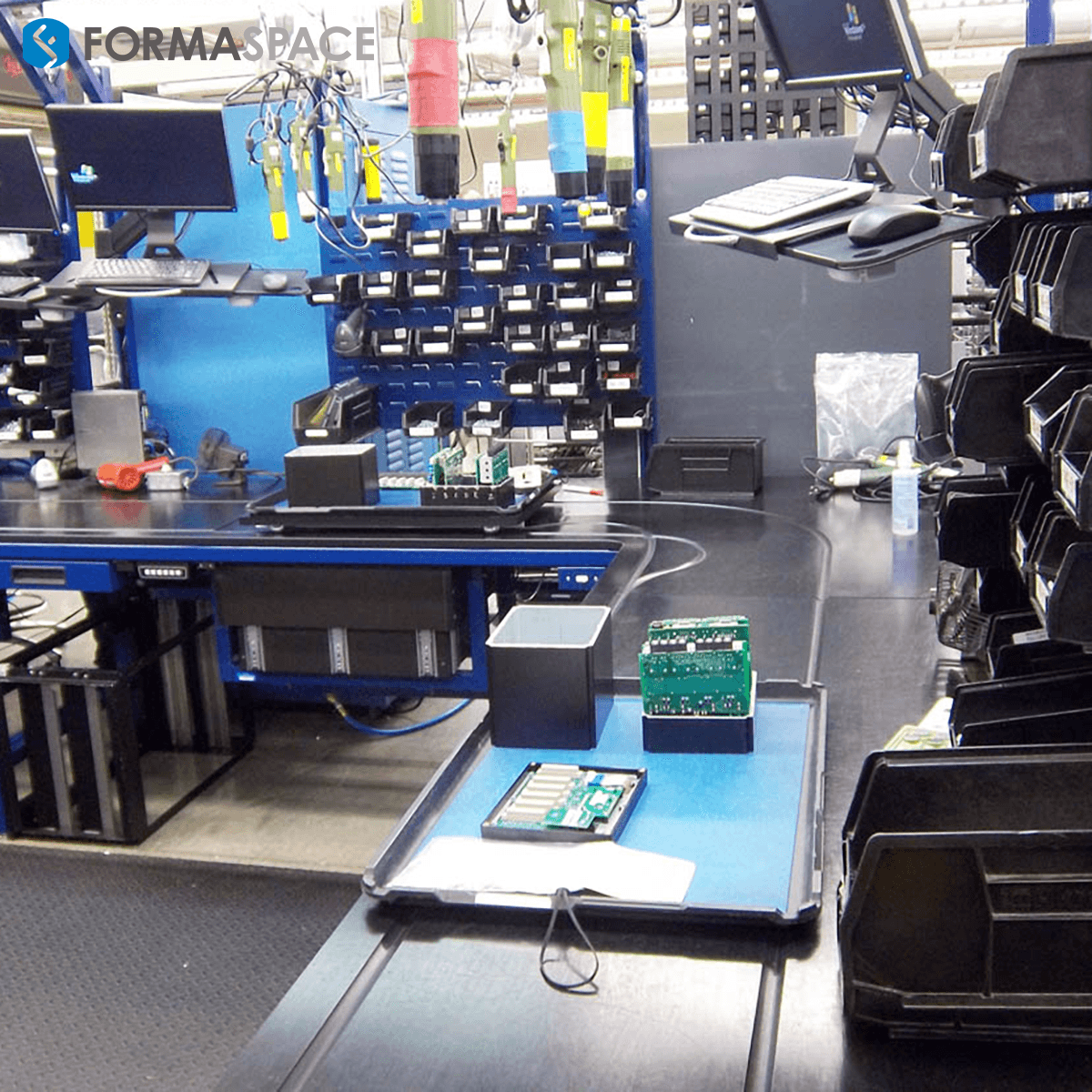
We offer a unique ESD workbench solution which turns the entire active worksurface into an ESD protection zone, eliminating the need to handle cumbersome temporary mats to control unwanted static electric shocks that can damage sensitive electronic equipment.
It’s time to find out more about Formaspace.
Your Formaspace Design Consultant is just a phone call away. We’ll be happy to share our expertise and help you make your electronics assembly operations run more smoothly and efficiently.
Make the call today. You’ll be glad you did.



